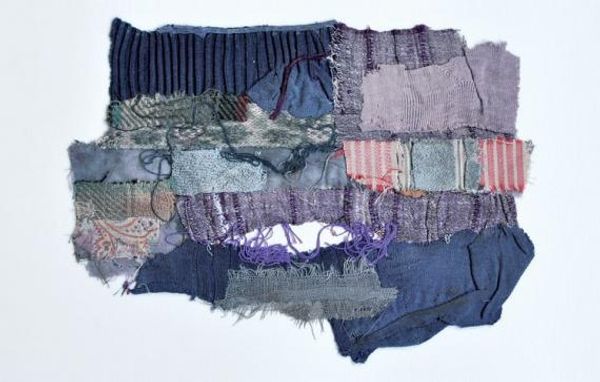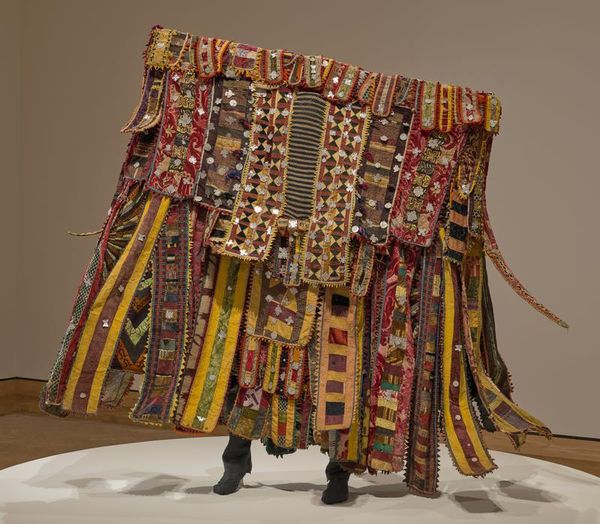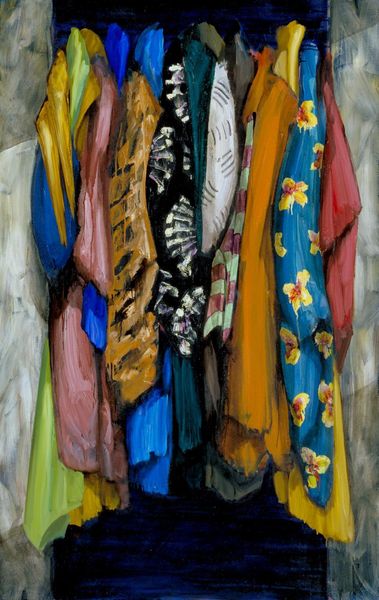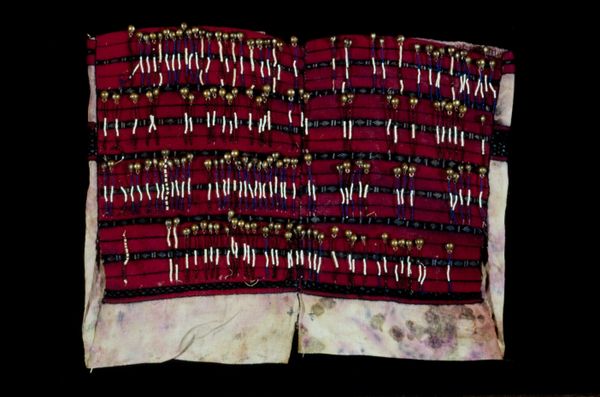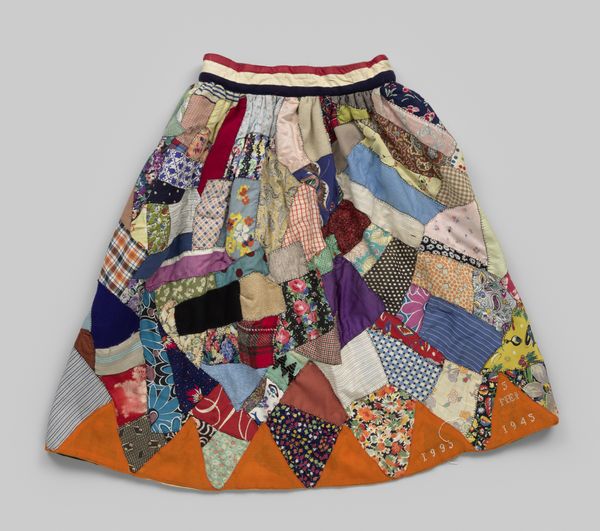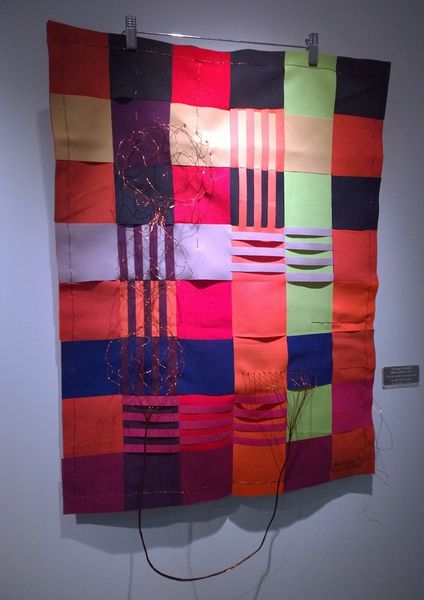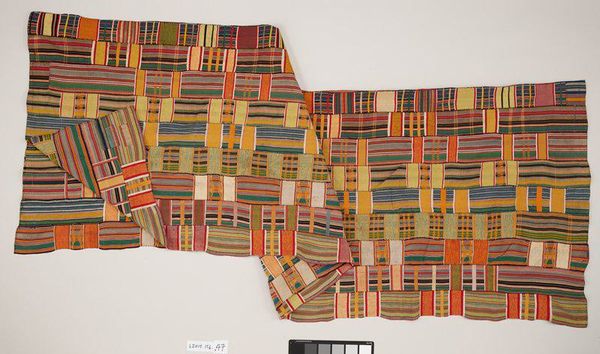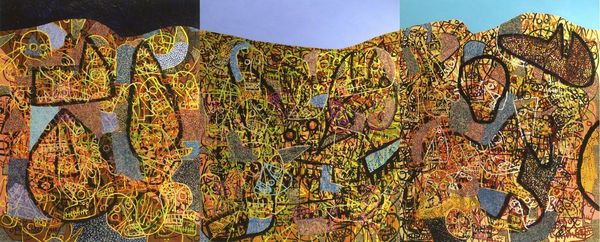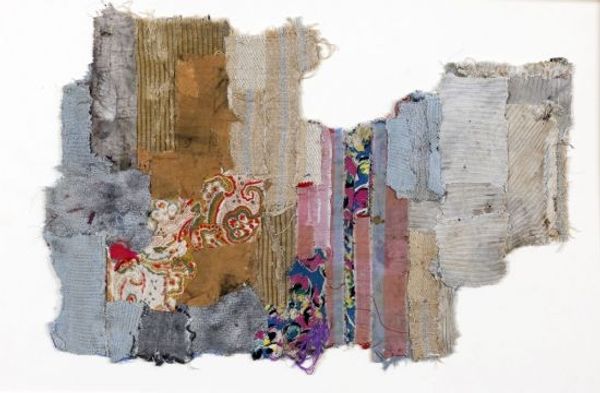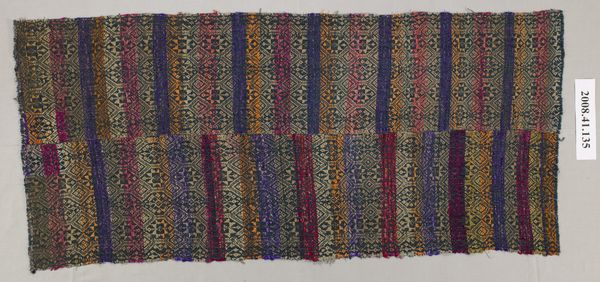
mixed-media, fibre-art, assemblage, textile
#
african-art
#
mixed-media
#
fibre-art
#
assemblage
#
textile
#
collage layering style
#
pattern making
#
fashion and textile design
#
hand-embroidered
#
embroidery
#
clothing theme
#
costume
#
textile design
#
decorated
#
layered pattern
#
ethnic design
Dimensions: 67 × 63 × 3 in. (170.18 × 160.02 × 7.62 cm) (approx.)
Copyright: Copyright Not Evaluated
Curator: Here we have a "Dance Costume," dating back to approximately the 1940s, a vibrant example of Yoruba artistic expression now residing here at the Minneapolis Institute of Art. The mixed media assemblage, incorporating textile and fibre art, is really striking. Editor: It's quite chaotic, in a beautiful way. My eye darts all over, trying to find some kind of organizing principle amongst the riot of textures and patterns. There's a real sense of history and lived experience woven into each piece of fabric. Curator: Absolutely. It embodies a fascinating approach to African art through the lens of costume and textile design. Each piece, meticulously placed, builds on the layered pattern, hand-embroidered details contribute a deeply ethnic design aesthetic. Editor: It strikes me as something deliberately assembled from remnants, almost like a cultural archive stitched together. Consider how clothing has always served as a powerful means of cultural expression. Is it just for performance, or is there also a message of resilience embedded within the fashion and textile design? Curator: Both aspects are critical. Clothing, especially ceremonial attire, performs essential public roles in Yoruba culture. It communicates status, embodies identity, and enacts collective narratives. I am interested in considering its potential usage. Who wore this, on what occasion, and before what audience? What expectations and norms were performed and reinforced through this display? Editor: The decorated surfaces certainly evoke ritual and performance. I wonder, too, about the labor involved in such a piece—the hands, mostly likely female, that stitched this all together. There's a rich intersectional narrative woven within those threads. Curator: These layered patterns can be understood not only visually but also as complex statements within their cultural and historical contexts, showcasing what clothing can communicate in its time, for its communities. Editor: Exactly. Beyond aesthetics, this costume represents a profound dialogue between personal and collective histories. Viewing it inspires deeper consideration for the stories our clothing tells—intentional or otherwise. Curator: I completely agree; examining the historical narratives, particularly understanding clothing’s position within cultures and histories, significantly elevates our understanding. Editor: Indeed, it’s a striking example of art acting as a voice, telling stories both seen and unseen.
Comments
No comments
Be the first to comment and join the conversation on the ultimate creative platform.
